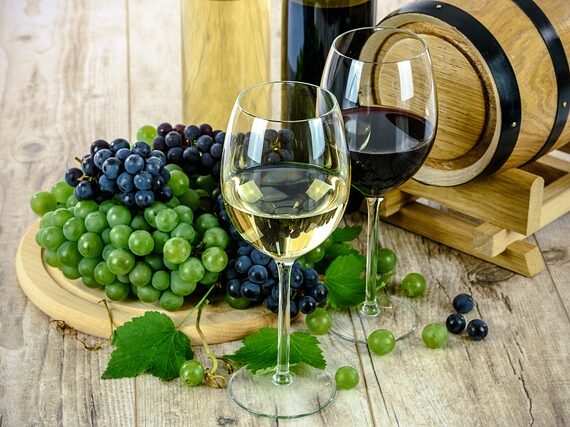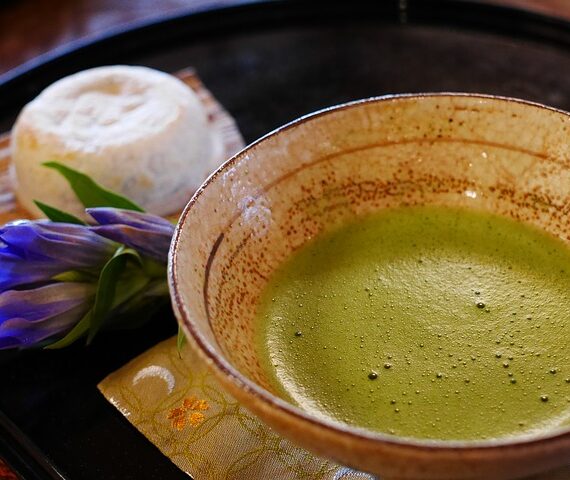By Steven Lay
To the casual observer, wine might appear to be a relatively straight forward beverage to create. But now that I am wanting to plant a few vines the whole process is becoming mind-boggling; aside from the winery, just the simple task of planting a few vines is a series of complex considerations. Obviously, I am not purporting that my earlier wine making hobby efforts produced a quality wine; far from it. But I have concluded, just any grape juice, even in the hands of an accomplished winemaker, does not bring forth a quality wine. So, what makes a great juice?
I am reminded of an adage: Great wine starts in the vineyard. “The phrase is not meant literally but implies that you can’t make great wine if the raw material isn’t up to scratch (sic). This is certainly true and in the past two decades wineries have been putting a huge amount of effort into their vineyards in a bid to improve their fruit quality, trialing new methods from green harvesting to fancy irrigation systems,” writes Rebecca Gibbs, Editor at Wine-Searcher.
There are indications that wines are being elevated starting in the vineyard. Just look at the amount of money being spent on new varietals, clones, new plantings, research into disease tolerant vines, and better soil chemistry/research. Even major universities are expending significant resources on research efforts that are improving the attributes/characteristics of wine grapes. For example, the University of Arkansas, under the direction of Dr. John Clark has a great wine grape program and has been awarded patents on brand new varietals. I am only pointing out that there is significant research, even in areas not known for being a bastion of wines. Of course, the recognized big players in wine research are: UC-Davis, Fresno State, Penn State, Cornell, Oregon, and Minnesota Universities.
There are many universities in the U.S. that have major programs underway to develop new clones, growing techniques and varietals that address specific needs of vineyard owners relative to improving plant and fruit quality. Such programs are bringing forward vastly improved fruit that make quality wines. The focus on grape/vine research is to improve the viticulture characteristics that address the ever-changing needs of the wine industry (and ultimately the consumer). With wineries in all 50 states, thus dictating differing needs of these geographically disparate wine centers, there is constant need for new ways to improve wine, starting in the vineyard. Such words as cloning, rootstock, breeding, and hybrids encourage wine lovers to think a little deeper about their wines.
Consider this, a vineyard owner/winery owner may need new vines with distinct characteristics. For example: improved cluster size, higher yields, different fruit chemistry, color of the juice, phenolics, a specific aroma profile, drought and wet climate resistance, more disease tolerant, etc. Obviously, this is a challenge that only relates to vineyard operations. In an earlier article I mentioned that there is an ongoing research program with the Catena Winery in Mendoza, Argentina and UC-Davis to develop new clones (and maybe varietals) that grow quality grapes in high and arid soils and climatic conditions. Again, you need good fruit for good wine.
Probably the most recognized grape varietal for wine is Cabernet Sauvignon, a varietal from France that came about by an act of nature. There are references to this grape that goes back to the 17th century. It is a “cross” between Sauvignon Blanc and Cabernet Franc. This varietal is planted basically worldwide and has some very admirable character for winemakers; it is hearty, great color and nice aromas. (By-the-way, the ancestry of the Cabernet Sauvignon was validated by UC-Davis in 1997. “UC- Davis scientists John Bowers and Carole Meredith solved the mystery using DNA fingerprinting technology that proved that Cabernet Sauvignon was the progeny of a surprising spontaneous crossing of the Bordeaux cultivars, Cabernet franc and Sauvignon blanc,” as reported in Foundation Plant Services 2008.)
With pollination happening in nature, even the Cabernet Sauvignon goes through mutational changes constantly. This would result in new clones coming about. Some have said there are 29 Cabernet Sauvignon clones.
Yes, we know vineyards select the vines they plant based upon a number of considerations, some were noted previously. In reality a vineyard manager, confronted with the need to plant new wines is confronted with a plethora of options for the vine specifications they will take to their vine nursery. The considerations run the gambit. For example, what are the soil conditions and what varietal will grow best? Climate trends can impact varietal selection and the clone type for that varietal. Then the vineyard manager must select a rootstock. And the list goes on. Sufficed to say: soil, climate, disease resistant, yields, colors and aromas of a grape can all be overruled by considerations dictated by the market place; what the consumer wants to buy. Sometimes the useful life of a vine (vines can produce for approximately 75 years) is never achieved because of considerations outside of human control.
So, when you are driving through vineyards in Sonoma or Napa on the way to a wine tasting, let’s explore the options that go into producing a high-quality fruit that will make high quality wines. All vineyards are not created equal. Today we know that the wine consumer is paying considerably more for quality wines. Ultimately, the vineyard owner will select a vine that will produce fruit that a winery will buy, that will also meet their specifications. After all, there are more than 10,000 varieties in the world. Of course, there are probably only a thousand or so used for wine and there are thousands of clones within varietals.
The selection of a vine for a vineyard is not a task to be taken lightly. At $4.60 a vine and assuming 2,000 vines per acre, it is easy to see that the financial commitment is extraordinary; not to mention that the owner is looking at 3 years to get a first harvest. After labor costs, irrigation preparations and material costs, it is easy to expect to spend $40,000 to $50,000 an acre to get first fruit.
A new trend in wine marketing is to brand a wine based upon the AVA (American Viticulture Area) of origin of the fruit made into wine. Therefore, by definition, each AVA designated by the TTB (Tax and Trade Bureau) is based upon a series of provable and researched differentiators that makes that area of land different than a plot at may be adjoining. Some of the issues discussed in an application for an AVA are: soil composition, past weather (rain, temps and snow) trends, aspects of climate (winds, sun exposure, etc.), altitude/elevation, and specific boundaries of the AVA. There are 240 AVA’s in the U.S. and 139 are in California; each AVA will impact what vines selected for planting-varietal, their clone, and rootstock.
Starting with Rootstock
Rootstock is basically an independent root system for which a grape varietal is grafted onto. That graft will eventually produce the fruit of a specific varietal. Like varietals and their clones, there are many varieties of rootstock. Rootstock is selected by the vineyard management that will produce the fruit, and is selected based upon the rootstock’s disease resistance, ability to acclimate to terroir; it’s important to choose the right rootstock for conditions in specific vineyards. Remember the earlier discussions about AVA’s, well now we can appreciate the importance of the rootstock onto which the grafting (scion) is placed.
France is very regulated when it comes to rootstock and clones. They recognize, for sale through the ENTAV-INRA 32 different rootstocks and over 1,200 clones of varietals. All these rootstocks are cataloged and monitored by the government. In the U.S. there is no reliable numbers on rootstock varieties; probably because there are so many different wine growing regions that require differing rootstock to sustain grape production. However, to add some proportionality, Sunridge Nurseries in Northern California, offers 31 different rootstocks. They also offer 160 clones of varietals they sell to vineyards; 14 clones pertain to their Cabernet Sauvignon plats.
In the U.S. we really do not know the number of clones, as an aggregated number, but Mark Chien at Penn State University states that there are “hundreds of clones for just the Pinot Noir varietal.” But, Chien’s basic interest is rootstock and he implies that that is the foundation of a successful vineyard production. “the first duty of a rootstock is to be phylloxera resistant.” (Phylloxera is a mite that devastated must of the vineyards in the 1880’s and still can.)
Finally, I believe the rootstock, with the varietal vine it produces, has a great influence on the vines health, grape aroma’s, taste of the grape and color of the finished wine. As Mark Chien points out, rootstocks offer the following characteristics:
- Protection against soil-borne pests and diseases
- Tolerance form environmental conditions such as drought, salinity, wet soil, etc.
- Influences vine vigor and size and even size of clusters
- Fruit ripening
- Ability to propagate
Remember, ultimately the selection of the rootstock and the clone will ultimately set the quality of the wine and ultimately the resulting price.
Onto Varietals/Clones
Sometimes a vineyard owner and his customers like a specific varietal because it has specific characteristics they like. For a myriad of reasons, maybe they have a need to more plantings of that varietal/clone.
Cloning gives that vineyard owner/manager the capability of taking a piece from a mother vine they like and by grafting it onto a rootstock they can nearly duplicate the properties inherent in the mother vine. Another option is to take a cutting (piece off the mother vine) and using basic rooting techniques, get the cutting to develop its own roots and then plant that cloned piece after it has developed rudimentary roots.
Hartmann, et al., 1990 defines a “Clone” as a genetically uniform group of vines derived originally from a single plant by asexual propagation (cuttings, grafting, etc.).
Clones are desirable as they offer some slight alterations to the characteristics of a varietal. Such changes might produce variation such as ripening patterns, cluster sizes, and maybe even yields. In 1995 the ENTAV-INRA in France noted there were 29 Cabernet Sauvignon clones. ENTAV-INRA is a trademarked organization under the French government that certifies clones. They also ensure the DNA purity of a rootstock. Yes, grapevines do have DNA traces.
Cloning is another reason why the same varietal may possess different characteristics in a wine. Now maybe we can appreciate the somewhat sudden interest in the impact terroir, rootstock, and clones have on the wines we like and buy. By visiting wineries and tasting many wines and talking to the winemakers we can have a little more meaningful discussion to explore a wines pedigree when we find a wine we truly like.
Here is quick example about what can happen when people don’t understand rootstock, clones and varietals as they relate to soil, climate and terroir. There are stories in the industry of people wanting to get into the wine business without paying much attention to the characteristics of the clone they selected to plant. In one wine region, a Chardonnay was planted that was not acclimated well to wet and cool climate. Yes, they soon realized the error of their ways and did recover by changing the clone type of the Chardonnay they planted. Clones make a difference and that is why there are so many of them in each varietal. Simply stated, vineyard owners must consider hundred of options before they can intelligently select on rootstock, varietals and clones.
What about Cross-breeding?
A few years ago, I had the fortune of meeting Dr. John Clark who spent an inordinate amount of time with me to give me an elementary education on breeding grapevines. He is recognized around the world as a breeder/developer of new varietal grapes to help the wine industry in the Midwest get new wine grapevines that work well in that specific wine growing region; remember every state has a wine industry of some size
Cross-breeding is taking one variety of grape and using the pollen from that grape vine to pollenate the flowers of another varietal (within the same species-vitis vinefera-which is the most common wine grape species). Then taking the seeds from resulting grape cluster and growing them. Over time the result will be a new varietal with very distinct characteristics; so different in fact that the new plant can be patented and taken to market by nurseries.
Cross-breeding is the process that the researcher hopes will turn out to be a desirable grape varietal.
Like in most endeavors, to the casual observer the true complexities involved can be overlooked. Wine is one of those endeavors. Visiting a winery and seeing big tanks and barrels and hoses and bottling lines on display do not really define what has gone on before winery activities comes into play. The activities in the vineyard are complex, backbreaking, fraught with a myriad of potential catastrophes and requires an ability to understand and work symbiotically with Mother Nature.
Quality wine starts on continues in the vineyard.
Mr. Lay started Image of Wine http://www.imageofwine.com to manufacture and sell high end wine accessories to corporations as gifts and branding items. These are items may be personalized.
All products are custom manufactured and recognized for their quality. Inquiries are welcomed by calling: 702-289-4167.
Article Source: Terroir, Rootstock, Clones, and Cross-Breeding: Quality Wine Starts In the Vineyard



